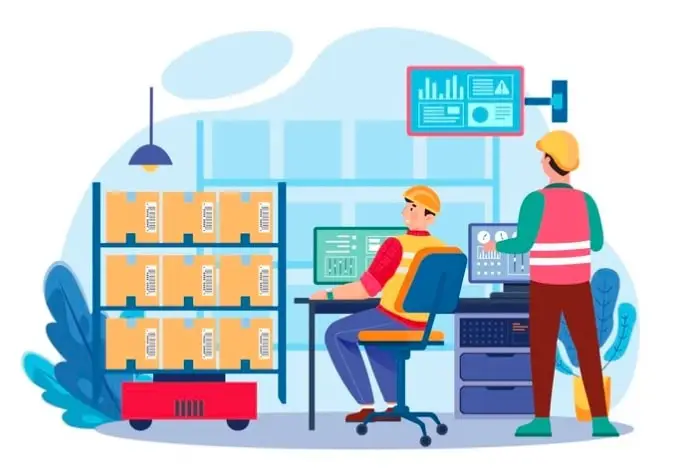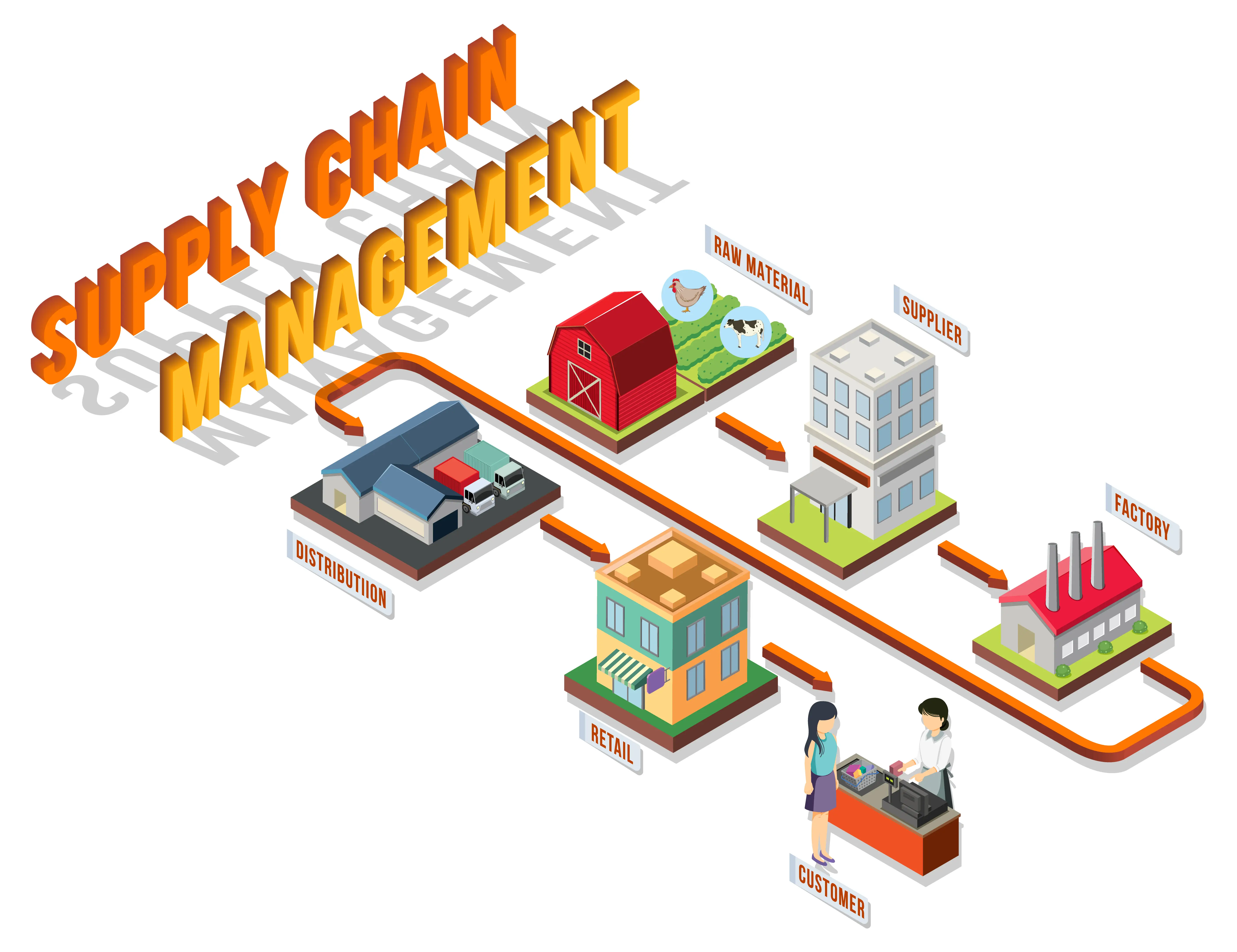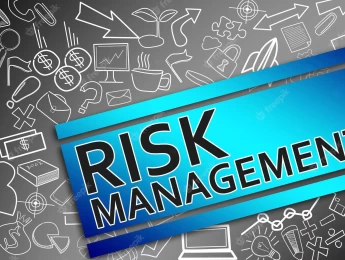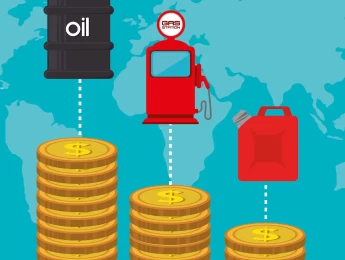In today's highly competitive business landscape, organisations across industries are constantly striving to improve their operational efficiency and profitability. One key aspect of achieving these goals is supply chain cost optimisation. By effectively managing and reducing costs associated with the supply chain, businesses can streamline their operations, enhance customer satisfaction, and gain a significant competitive advantage. In this blog post, we will explore the concept of supply chain cost optimisation, its importance, the elements it encompasses, the tools available for optimisation, effective strategies, and its promising future.
What Is Supply Chain Cost Optimisation?
Supply chain cost optimisation refers to the systematic approach of managing and reducing expenses associated with the flow of goods and services from suppliers to end customers. It involves analysing the various processes, resources, and stakeholders involved in the supply chain to identify areas of inefficiency and implement measures to minimise costs without compromising quality or service.
Why Is Supply Chain Cost Optimisation Important?
In the intricate web of modern commerce, supply chain cost optimisation stands as the linchpin that holds together the intricate processes of procurement, production, and delivery. Its paramount importance can be dissected into several key aspects that underscore its significance in today's business landscape:
Enhanced Profitability
The financial heartbeat of any organisation pulsates through its profitability. For businesses, optimising supply chain costs translates directly into enhanced profitability. Every penny saved in the procurement of raw materials, transportation, or inventory management contributes directly to the bottom line. This increase in profitability is not merely a matter of numbers on a balance sheet; it signifies the financial health and sustainability of the business. With higher profits, companies can reinvest in research, development, and employee welfare, fostering an environment of innovation and growth.
Customer-Centric Competitive Advantage
In an era where consumers are not just buyers but also critics with a vast array of options, businesses must tread the path of customer satisfaction with utmost diligence. Supply chain cost optimisation enables companies to offer products or services at competitive prices, making them more attractive to price-sensitive customers. A company that can maintain quality while keeping prices competitive gains a significant edge in the market. This competitive advantage translates into increased customer loyalty and a growing customer base, vital components for any business aiming for long-term success.
Operational Efficiency as the Cornerstone
Efficient operations form the backbone of any successful enterprise. Supply chain cost optimisation forces companies to scrutinise every aspect of their operations. This scrutiny, in turn, leads to the identification and elimination of inefficiencies, reduction of redundancies, and streamlining of processes. The outcome? Operational efficiency, where tasks are performed with precision, deadlines are met promptly, and resources are utilised judiciously. Efficient operations not only cut costs but also enhance the company's reputation for reliability and punctuality, two factors that resonate deeply with clients and customers alike.
Strategic Resource Allocation
In the pursuit of growth, businesses often face the challenge of resource allocation. Supply chain cost optimisation allows organisations to allocate resources strategically. Funds that would have otherwise been tied up in excess inventory or unnecessary operational costs can be redirected to areas that require investment, such as marketing campaigns, research and development, or upgrading technology infrastructure. This strategic allocation of resources ensures that every penny spent contributes to the company's growth trajectory, aligning the financial compass towards sustainable expansion.
Enhanced Supplier Relationships
An optimised supply chain fosters stronger relationships with suppliers. When a company consistently manages its orders, pays on time, and maintains a predictable demand pattern, suppliers are more likely to offer favourable terms, discounts, and prioritised deliveries. This mutually beneficial relationship not only reduces costs but also ensures a steady and reliable supply of raw materials. Moreover, collaborative relationships often result in joint problem-solving, leading to innovative solutions and further cost reductions.
Reduced Risk and Supply Chain Disruptions
A streamlined supply chain is inherently resilient. By optimising inventory levels and having a clear visibility into the supply chain, businesses can better navigate unexpected disruptions, whether caused by natural disasters, geopolitical events, or pandemics. Having contingency plans and diversifying suppliers, both facilitated by cost optimisation practices, reduce the risk of supply chain disruptions. This resilience not only saves costs associated with downtime but also protects the brand reputation and customer trust.
Compliance and Sustainability
Compliance with local and international regulations is crucial for any business. Supply chain cost optimisation often involves rigorous auditing and monitoring of suppliers, ensuring that they meet the necessary compliance standards. Moreover, as sustainability becomes a focal point in global business practices, an optimised supply chain allows companies to adopt eco-friendly methods. This might include choosing greener transportation options, reducing waste through efficient processes, and implementing energy-saving technologies. Beyond the ethical implications, sustainable practices often lead to reduced costs in the long run, through energy savings, waste reduction, and positive branding.
In essence, supply chain cost optimisation is not merely a cost-cutting endeavour; it is an investment in the company's future. It is an assurance of profitability, a shield against market competition, and a catalyst for operational excellence. Embracing this practice is not just a strategic move but a necessity in the ever-evolving landscape of global commerce, where only the fittest, the most efficient, and the most adaptable can survive and thrive.
What Does Supply Chain Cost Optimisation Include?
Supply chain cost optimisation encompasses various elements and considerations throughout the supply chain lifecycle. Here are some key areas to focus on:
1- Supplier Management
Supplier management involves far more than transactional relationships. Optimal supplier management includes negotiating favourable terms, ensuring timely delivery of quality materials at competitive prices, and fostering long-term strategic partnerships. By collaborating closely with suppliers, businesses can leverage volume-based discounts, negotiate flexible delivery schedules, and even co-innovate, leading to mutually beneficial outcomes.
2- Inventory Management
Inventory management is a delicate balancing act. Overstocking ties up capital and warehouse space, leading to increased carrying costs and potential obsolescence. On the contrary, stockouts can lead to missed sales opportunities and dissatisfied customers. Optimisation in this area involves accurate demand forecasting, enabling businesses to maintain optimal inventory levels. By leveraging historical data, market trends, and sophisticated demand forecasting tools, businesses can align production and stocking with actual customer demands, thereby reducing carrying costs while ensuring products are readily available when needed.
Table 1: Key areas for optimisation
Elements | Description |
Supplier Management | Efficient negotiation, relationship management, and timely deliveries. |
Inventory Management | Preventing overstocking/stockouts, reducing carrying costs, minimising obsolescence risks. |
Transportation and Logistics | Identifying cost-effective transportation modes, routes, and carriers. |
Warehousing and Distribution | Optimising warehouse layout, storage methods, and order fulfilment. |
Demand Forecasting | Aligning production levels with customer demands, reducing excess inventory. |
3- Transportation and Logistics
In the global marketplace, choosing the right transportation modes, routes, and carriers is crucial. Efficient transportation and logistics management entail selecting cost-effective shipping methods while ensuring timely deliveries. This involves analysing different transport options, considering factors such as distance, speed, and reliability. Leveraging technology, such as Transportation Management Systems (TMS), provides visibility into freight movements, enabling businesses to optimise routes, reduce freight costs, enhance delivery schedules, and improve overall customer satisfaction.
4- Warehousing and Distribution
Warehousing and distribution form the physical backbone of the supply chain. Optimising warehouse operations involves assessing storage layouts, material handling methods, and order fulfilment processes. By maximising space utilisation, minimising handling time, and improving order accuracy, businesses can significantly reduce operational costs. Additionally, implementing Warehouse Management Systems (WMS) streamlines operations by automating tasks such as inventory tracking, order picking, and shipping, leading to improved efficiency and cost savings.
5- Demand Forecasting
Accurate demand forecasting is a cornerstone of supply chain cost optimisation. Businesses must anticipate market needs to align production levels with customer demands effectively. Utilising historical data, market analysis, and advanced predictive analytics, demand forecasting tools provide insights into consumer behaviour and market trends. By aligning production and inventory levels with these forecasts, businesses can avoid excess inventory costs, minimise stockouts, and respond swiftly to market fluctuations, ensuring products are available when and where customers need them.
Incorporating these elements into supply chain management practices equips businesses with the knowledge and tools necessary to optimise costs without compromising quality or customer satisfaction. A holistic approach to supply chain cost optimisation, addressing each element with precision, paves the way for streamlined operations, enhanced profitability, and a sustainable competitive advantage.
SCM Tools for Supply Chain Cost Optimisation
Supply chain management (SCM) tools play a vital role in achieving cost optimisation. Here are some commonly used tools:
Enterprise Resource Planning (ERP) Systems
Enterprise Resource Planning (ERP) systems serve as the backbone of modern supply chains. These comprehensive software solutions integrate various aspects of the supply chain, including procurement, inventory management, production, and distribution. ERPs provide real-time data, enabling businesses to make informed decisions and swiftly adapt to changing market demands. By offering a holistic view of the entire supply chain, ERPs enable organisations to track costs, streamline processes, and identify optimisation opportunities.
Transportation Management Systems (TMS)
Transportation Management Systems (TMS) offer a strategic approach to optimise transportation operations. These tools provide businesses with visibility into freight movements, carrier selection, and route optimisation. TMS solutions analyse factors such as shipping costs, delivery schedules, and carrier performance, allowing companies to make data-driven decisions. By optimising routes, minimising transit times, and reducing transportation costs, TMS not only enhances operational efficiency but also ensures timely deliveries, thereby increasing customer satisfaction.
Warehouse Management Systems (WMS)
Warehouse Management Systems (WMS) revolutionise warehouse operations from top to bottom. These tools automate and optimise various tasks, from inventory tracking and order picking to packing and shipping. WMS solutions provide real-time insights into inventory levels and warehouse activities, allowing businesses to optimise storage space, reduce order processing times, and enhance order accuracy. By automating mundane tasks and improving overall efficiency, WMS solutions contribute significantly to cost reduction, making warehouse operations seamless and cost-effective.
Demand Planning Software
Demand Planning Software utilises advanced algorithms, historical data, and market trends to forecast demand accurately. By analysing consumer behaviour, seasonality, and market dynamics, these tools provide valuable insights into future demand patterns. Accurate demand forecasts enable businesses to align production levels with market needs, preventing excess inventory and reducing carrying costs. Additionally, demand planning software facilitates proactive decision-making, ensuring that products are available when and where customers need them, leading to enhanced customer satisfaction and increased sales.
Business Intelligence and Analytics
Business Intelligence (BI) and Analytics tools empower businesses to transform raw data into actionable insights. These tools provide in-depth analysis of supply chain performance, supplier behaviour, customer preferences, and market trends. By leveraging data visualisation, predictive analytics, and machine learning algorithms, businesses can identify patterns, trends, and optimisation opportunities. With these insights, organisations can make informed decisions, enhance supply chain efficiency, and reduce costs. BI and Analytics tools serve as a compass, guiding businesses towards the most cost-effective routes, suppliers, and strategies, thereby optimising the entire supply chain ecosystem.
Incorporating these advanced tools into supply chain management processes equips businesses with the technological prowess needed to navigate the complexities of the modern market. By leveraging the power of ERP systems, TMS solutions, WMS tools, demand planning software, and Business Intelligence, organisations can optimise their supply chain costs with unparalleled precision, ensuring competitiveness, efficiency, and profitability in an ever-evolving business landscape.
Supply Chain Cost Optimisation Strategies
The strategic landscape of supply chain cost optimisation is diverse, offering businesses a multitude of paths to enhance efficiency and reduce expenditures. Here’s an in-depth exploration of the proven strategies that empower organisations to optimise their supply chain costs effectively:
Supplier Consolidation
Supplier consolidation involves strategically reducing the number of suppliers and fostering strong, collaborative relationships with a select few. By consolidating suppliers, businesses can negotiate volume-based discounts, streamline communication channels, and reduce administrative overhead. A focused approach to supplier relationships not only enhances efficiency in procurement but also fosters collaboration, allowing suppliers to align their production with the company's needs. This partnership-based approach often results in lower costs, improved product quality, and timely deliveries, contributing significantly to cost optimisation efforts.
Lean Manufacturing
Lean manufacturing principles emphasise the elimination of waste, be it excess inventory, overproduction, or unnecessary processes. Adopting just-in-time production methods and minimising excess inventory helps in lowering carrying costs and minimising storage space requirements. Moreover, lean practices streamline production processes, reducing lead times and enhancing overall operational efficiency. By focusing on value-adding activities and eliminating non-value-adding ones, businesses can optimise resources, reduce costs, and improve the quality of products and services, thereby gaining a competitive edge in the market.
Process Optimisation
Process optimisation involves a meticulous analysis of supply chain workflows to identify bottlenecks, redundancies, and inefficiencies. By conducting detailed process mapping, businesses can visualise the entire supply chain, pinpointing areas where delays or wastes occur. Through process reengineering, organisations can streamline workflows, reduce wait times, and enhance resource utilisation. Automation of repetitive tasks, introduction of best practices, and continuous monitoring ensure that processes remain optimised over time. This strategy not only reduces costs but also enhances overall productivity and customer satisfaction by ensuring timely deliveries and seamless order fulfilment.
Collaborative Planning, Forecasting, and Replenishment (CPFR)
Collaborative Planning, Forecasting, and Replenishment (CPFR) involves close collaboration with suppliers and customers to share demand forecasts and coordinate production and replenishment plans. By aligning supply chain activities with actual market demands, businesses can minimise stock outs, lower inventory carrying costs, and enhance responsiveness to market fluctuations. CPFR facilitates real-time communication between stakeholders, allowing for rapid adjustments to production and inventory levels based on changing consumer needs. This collaborative approach not only optimises costs but also strengthens relationships with both suppliers and customers, fostering long-term partnerships and mutual growth.
Continuous Improvement
Embracing a culture of continuous improvement is not just a strategy; it's a mindset that permeates the entire organisation. Employees are encouraged to identify inefficiencies, propose innovative solutions, and implement cost-saving measures. Regular brainstorming sessions, employee training, and open communication channels enable the workforce to actively participate in the cost optimisation process. By empowering employees to take ownership of their roles and contribute to the organisation's efficiency goals, businesses can achieve ongoing process improvements. This approach ensures that the supply chain remains adaptable, responsive, and resilient, leading to sustained cost optimisation and operational excellence.
The Future of Supply Chain Cost Optimisation
As technology advances and new market dynamics emerge, the future of supply chain cost optimisation looks promising. With 21% of small businesses reporting not utilising an inventory management system in 2023, it’s definitely time for change. So, here are some key trends to watch out for:
Data Analytics and AI
Data analytics and artificial intelligence (AI) are set to become the bedrock of future supply chain optimisation efforts. By harnessing the power of big data and predictive analytics, businesses can gain deeper insights into their supply chain operations. AI algorithms analyse vast datasets, identifying patterns, trends, and anomalies in real-time. These insights enable businesses to make data-driven decisions, predict demand with unparalleled accuracy, optimise inventory levels, and enhance supply chain efficiency. Machine learning algorithms learn from historical data, continually improving their predictive capabilities, allowing businesses to anticipate market trends and customer demands with precision.
Blockchain Technology
Blockchain technology, renowned for its transparent and secure transactional records, is reshaping supply chain management. By establishing a decentralised and tamper-proof ledger, blockchain ensures transparency at every stage of the supply chain. This transparency not only fosters trust among stakeholders but also facilitates enhanced traceability. With a clear view of the production, shipment, and delivery processes, businesses can identify inefficiencies, reduce fraud, and optimise costs. Blockchain also enables the creation of smart contracts, automating various supply chain processes, thereby reducing manual intervention and minimising errors. This technology is a game-changer, ensuring integrity, security, and efficiency within the supply chain ecosystem.
Sustainability and Green Supply Chains
Sustainability is no longer a buzzword but a fundamental pillar of future supply chain strategies. Building green supply chains involves adopting eco-friendly practices that minimise environmental impact and promote social responsibility. Businesses are increasingly focused on reducing waste, minimising energy consumption, and choosing eco-friendly transportation options. These sustainable practices not only contribute to environmental conservation but also lead to long-term cost savings. By optimising energy usage, reducing packaging waste, and embracing renewable energy sources, businesses can reduce operational costs significantly. Moreover, green supply chains enhance brand reputation, attracting eco-conscious customers, and fostering positive relationships with environmentally responsible suppliers. Embracing sustainability is not just a moral imperative but a strategic decision that ensures long-term profitability and resilience in a rapidly changing world.
Real-time Supply Chain Monitoring
Real-time monitoring, facilitated by the Internet of Things (IoT) devices and sensors, is redefining supply chain visibility. These smart sensors are strategically placed throughout the supply chain, providing real-time data on inventory levels, shipment conditions, and performance metrics. By continuously monitoring these variables, businesses can proactively identify issues before they escalate, enabling swift corrective actions. Real-time data allows for agile decision-making, reducing costs associated with delays, stockouts, and quality issues. IoT devices also enhance asset tracking, reducing losses due to theft or misplacement. This level of visibility ensures that businesses can respond promptly to changing market demands and optimise supply chain operations dynamically.
In short, the future of supply chain cost optimisation is a blend of technological innovation and sustainable practices. By leveraging the power of data analytics, embracing blockchain technology, adopting eco-friendly initiatives, and investing in real-time monitoring through IoT devices, businesses can unlock unprecedented efficiency and cost savings. The integration of these advancements into supply chain strategies not only ensures financial savings but also fosters resilience, transparency, and ethical responsibility. As businesses embark on this transformative journey, they are not just optimising costs; they are building supply chains that are agile, responsible, and future-ready, ensuring sustained success in the dynamic landscape of global commerce.
Gamification in Supply Chain Cost Optimisation
In recent years, an innovative approach has emerged in the realm of supply chain management: gamification. Gamification leverages game-design elements and principles to engage, motivate, and educate individuals in non-game contexts. Integrating gamification into supply chain cost optimisation not only transforms mundane tasks into interactive challenges but also enhances learning, boosts employee morale, and fosters a culture of continuous improvement. Here’s a detailed exploration of the concept with key points:
Engaging Simulations
Gamification introduces employees to supply chain dynamics through engaging simulations. These simulations mimic real-world scenarios, enabling participants to strategise, make decisions, and witness the consequences in a risk-free environment. By transforming learning into play, employees can experiment with various cost optimisation strategies, learning from both successes and failures. This interactive approach enhances comprehension and retention, making complex supply chain concepts accessible and enjoyable.
Healthy Competition
Gamification introduces an element of healthy competition among employees. By dividing teams and individuals into competitive groups, businesses can foster teamwork and innovation. Participants collaborate, brainstorm, and strategise to solve supply chain challenges, competing against each other to achieve the best cost optimisation results. This competitive spirit not only boosts morale but also encourages employees to think creatively and implement innovative solutions. The drive to outperform peers enhances engagement, leading to a motivated and proactive workforce.
Instant Feedback and Recognition
Gamification platforms provide instant feedback and recognition for achievements. As participants progress through challenges and achieve milestones, they receive immediate feedback, reinforcing positive behaviour and boosting motivation. Recognition can be in the form of badges, points, or leaderboards, creating a sense of accomplishment. This positive reinforcement not only acknowledges individual and team efforts but also encourages continuous participation. Employees are more likely to engage actively when their efforts are recognised and rewarded promptly.
Goal Alignment and Skill Enhancement
Gamification allows businesses to align individual goals with organisational objectives seamlessly. By incorporating supply chain optimisation challenges into the game, employees understand how their efforts contribute to the company's overall cost-saving goals. Setting specific targets within the game encourages participants to focus on key performance indicators (KPIs) relevant to cost optimisation. As employees work towards achieving these goals, they enhance their skills in negotiation, problem-solving, and decision-making, making them valuable assets within the organisation.
Adaptable Training Modules
One of the significant advantages of gamification is its adaptability. Training modules can be tailored to address specific supply chain challenges faced by the organisation. Whether it's optimising supplier relationships, reducing transportation costs, or improving demand forecasting, gamification can be customised to simulate these challenges. This tailored approach ensures that employees receive targeted training, enabling them to apply learned skills directly to real-world situations, leading to tangible cost-saving results.
Table 2: The benefits of gamification
Promoting a Culture of Continuous Improvement
Gamification nurtures a culture of continuous improvement within the organisation. By encouraging employees to engage in interactive challenges regularly, businesses foster an environment where innovation is celebrated. Employees are motivated to explore new ideas, experiment with different strategies, and collaborate with colleagues. This culture of innovation often leads to the discovery of unconventional solutions to supply chain challenges, resulting in significant cost optimisation. Furthermore, when employees witness the impact of their innovative ideas in the game, they are more inclined to implement these strategies in their daily work, driving continuous improvement initiatives.
Incorporating gamification into supply chain cost optimisation not only makes the learning process enjoyable but also enhances employee engagement, fosters innovation, and reinforces a culture of continuous improvement. By transforming challenges into interactive games, businesses can unlock the creative potential of their workforce, leading to efficient and cost-effective supply chain management practices.
Conclusion
Supply chain cost optimisation is not just a business strategy; it's a transformative journey towards unparalleled efficiency, profitability, and sustainability. By embracing the power of data analytics, AI, and innovative technologies like blockchain, businesses can navigate the complex terrain of modern markets with confidence. Furthermore, focusing on sustainability not only contributes to a greener planet but also leads to substantial long-term cost savings and a positive brand image.
Embarking on this transformative journey requires knowledge and expertise. If you are eager to revolutionise your approach to supply chain management and logistics, our ‘Supply Chain Management and Logistics’ course is your gateway to mastering these cutting-edge strategies. Gain insights from industry experts, delve into real-world case studies, and acquire the skills needed to optimise your supply chain, reduce costs, and ensure your business thrives in the competitive landscape. Don't just adapt to the future; shape it with our comprehensive course. Enrol now and witness your supply chain undergo a remarkable transformation, propelling your business to new heights of success!
Frequently Asked Questions(FAQ)
How can supply chain cost optimisation benefit my business?
Supply chain cost optimisation significantly benefits your business by improving profitability, enhancing operational efficiency, and providing a competitive advantage. By reducing expenses and streamlining processes, your company can allocate resources strategically, leading to sustainable growth and increased customer satisfaction. It’s not just about cost reduction; it’s an investment in your business’s financial health and long-term success.
What tools can I use for supply chain cost optimisation?
There are several tools available for supply chain cost optimisation, including enterprise resource planning (ERP) systems, transportation management systems (TMS), warehouse management systems (WMS), and demand planning software. Utilising these tools empowers your business with real-time data, streamlined operations, and informed decision-making. Each tool serves a specific purpose, enabling you to address various aspects of your supply chain, ensuring efficiency, and driving cost reductions.
What strategies can I implement for supply chain cost optimisation?
Implementing strategies such as supplier consolidation, lean manufacturing, process optimisation, collaborative planning, and continuous improvement can significantly contribute to cost reduction and efficiency gains. Supplier consolidation fosters stronger relationships and volume-based discounts, while lean manufacturing minimises waste and excess inventory. Process optimisation identifies bottlenecks and enhances efficiency, and collaborative planning ensures alignment with market demands. Continuous improvement creates a culture of innovation, where employees actively contribute to ongoing efficiency gains, making your supply chain agile and cost-effective.
How does supply chain cost optimisation contribute to sustainability?
Supply chain cost optimisation contributes to sustainability by optimising processes, reducing waste, and choosing eco-friendly options. By minimising excess inventory and optimising transportation routes, your organisation reduces its carbon footprint. Moreover, embracing sustainable practices, such as using renewable energy and eco-friendly packaging, not only reduces environmental impact but also leads to long-term cost savings. Sustainable supply chains enhance your brand’s reputation, attract environmentally conscious customers, and create a positive societal impact, aligning your business with ethical practices and cost-effective solutions.
What does the future hold for supply chain cost optimisation?
The future of supply chain cost optimisation is marked by advancements in data analytics, AI, blockchain technology, and real-time monitoring. These technologies enable businesses to gain deeper insights into their operations, identify patterns, and make data-driven decisions. Additionally, there will be a stronger focus on sustainability, encouraging organisations to adopt greener practices, reduce waste, and minimise energy consumption. These innovations offer new opportunities for cost optimisation, improved profitability, and sustainable growth, shaping the future landscape of supply chain management. Embracing these advancements ensures that your business remains competitive, efficient, and environmentally responsible in the evolving global market.




















